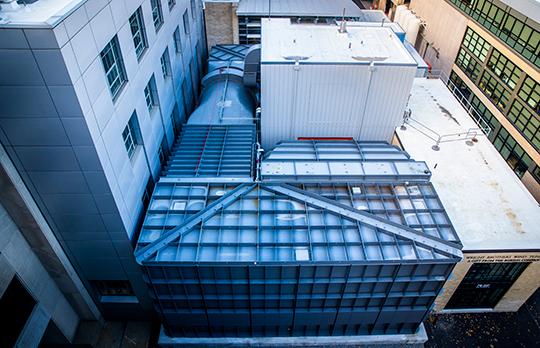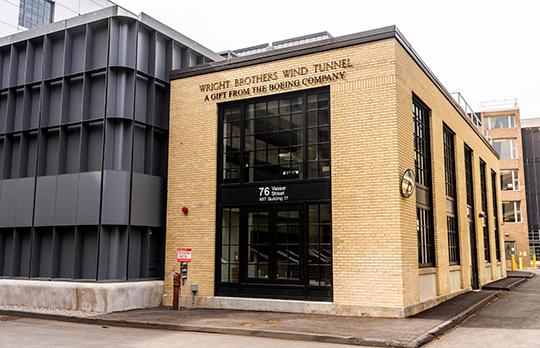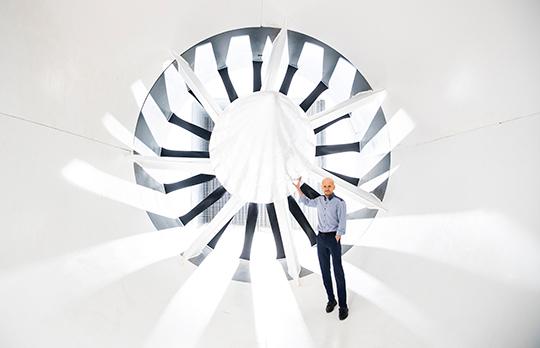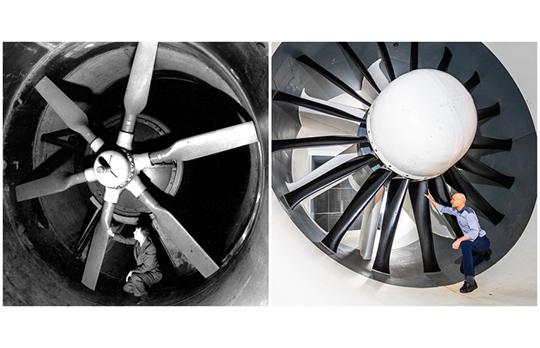Overview




Status
Completion Date
Themes and priorities
Since it first opened in September 1938, MIT’s Wright Brothers Wind Tunnel has been an instrumental tool in the development of aerospace, architectural, vehicular, sports, and other engineering systems. Testing at the facility has ranged from aircraft and ground structure aeroelasticity to the aerodynamics of subway station entrances, space suits, racing bicycles, and Olympic ski suits. After 80 years of service, MIT undertook and completed a renovation and modernization of the landmark facility.
The new tunnel incorporates state-of-the-art technologies and equipment that provide expanded capacity while lowering fan motor power consumption. With a test area volume of 1600 cubic feet and the ability to test speeds up to 230 mph, it is the largest and most advanced academic wind tunnel in the nation (as of construction completion). Located at Building 17 on the site of the current tunnel (which was dismantled), the new facility retains the Wright Brothers Wind Tunnel name.
The renovations included updates to the control facilities, a full rehabilitation of Building 17, and infrastructure updates in Building 37 and in the Building 33 Hangar. The project also created direct connections between the tunnel and AeroAstro workshops.
Image credits
Details
Address
School or Unit
Use
Project Team
Architect: Imai Keller Moore Architects, Watertown, MA.
Construction manager: Turner Construction Co, Boston MA.
MIT Team: Eric Ammondson, Robert P. Cunkelman, Christos Maravelias, Sonia Richards
Scope
Design Features
- Renovation and modernization of a landmark facility
- Largest and most advanced academic wind tunnel in the nation (as of construction completion)
- State-of-the-art technologies and equipment to provide expanded capacity while lowering fan motor power consumption
- Test area volume of 1600 cubic feet
- Able to test speeds up to 230 mph
- Updates to control facilities
- Infrastructure updates
- Created direct connections between the tunnel and AeroAstro workshops
Sustainable Design Elements
- High-performance windows
- Low-flow fixtures
- LED sensor-driven lighting
- VAV system and right-sizing of HVAC equipment to reduce energy use
- Energy recovery ventilation
- Stormwater management
- Restoration and reuse of existing building (Building 17)
- Variable frequency drives for major mechanical equipment and wind tunnel motor
News+Video
In the News
- MIT unveils new Wright Brothers Wind Tunnel; A state-of-the-art facility replaces a nearly 80-year-old campus landmark to become the most advanced wind tunnel in U.S. academia; MIT News; June 8, 2022
- MIT to construct new, cutting-edge Wright Brothers Wind Tunnel; Largest, most advanced U.S. academic tunnel will replace 79-year-old facility; Boeing is project’s lead donor with philanthropic commitment; MIT News, November 13, 2017
Video
Harnessing the Wind at MIT: Wright Brothers Wind Tunnel (2012)
MIT Professors Judson R. Baron and Eugene E. Covert, pioneers in aeronautics, discuss the early days of MIT's state-of-the-art Wright Brothers Wind Tunnel, which investigated problems related to supersonic flight, and became an essential tool in the examination of aerospace, architectural, vehicular, and other engineering systems. (1997)

